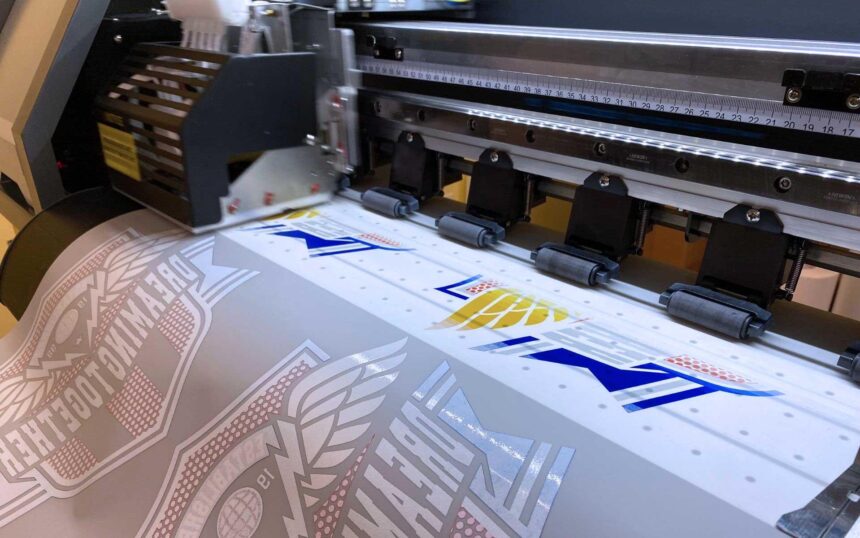If you’re in the world of custom printing, you might have come across the term DTF prints. But what exactly are they, and why are they gaining so much attention? Let’s delve into the world of DTF printing and discover how it’s revolutionizing the way we create custom designs.
Introduction to DTF Prints
DTF, or Direct to Film, printing is a relatively new technique that offers a unique way of transferring designs onto various substrates, including garments, accessories, and promotional items. Unlike traditional methods like screen printing or DTG printing, DTF printing involves transferring designs directly onto a special film using a printer equipped with DTF-specific inks.
Advantages of DTF Prints
One of the key advantages of DTF printing is its versatility. It can be used on a wide range of materials, including cotton, polyester, leather, and even wood and metal. This versatility makes it a popular choice for businesses looking to offer customized products to their customers.
The process also allows for incredibly detailed designs with vibrant colors that pop. Whether you’re printing intricate patterns or photorealistic images, DTF printing can capture every detail with precision and clarity.
Another advantage of DTF prints is their durability. The prints are resistant to fading and cracking, even after multiple washes, making them ideal for items that will be subjected to regular wear and tear.
Choosing the Right DTF Printing Equipment
When venturing into DTF printing, it’s essential to invest in the right equipment. This includes high-quality printers capable of handling DTF inks and compatible software for designing and printing. Considerations such as budget and production volume should also be taken into account when selecting equipment.
Preparing Artwork for DTF Printing
To achieve the best results with DTF printing, it’s crucial to prepare artwork correctly. This involves understanding file formats, utilizing color separation techniques, and ensuring the resolution and image quality are suitable for printing.
DTF Printing Process Step by Step
The DTF printing process typically involves preparing the substrate, printing the design onto the film, curing the print using a heat press or conveyor dryer, and applying any finishing touches, such as additional layers or embellishments.
Applications of DTF Prints
DTF printing has a wide range of applications across various industries. From custom apparel and fashion accessories to promotional products and personalized merchandise, the possibilities are endless.
Comparing DTF Printing with Other Printing Methods
While DTF printing offers many benefits, it’s essential to consider how it compares to other printing methods, such as DTG printing, screen printing, and sublimation printing, in terms of quality, cost, and suitability for different applications.
Common Challenges in DTF Printing
Like any printing method, DTF printing comes with its own set of challenges. These may include issues with ink adhesion, color management, and equipment maintenance. However, with proper knowledge and techniques, these challenges can be overcome.
Tips for Successful DTF Printing
To ensure successful DTF prints, it’s essential to maintain equipment regularly, experiment with different substrates and printing techniques, and seek advice from experienced professionals in the field.
Future Trends in DTF Printing
As technology continues to advance, we can expect to see further innovations in DTF printing, including improvements in print quality, sustainability, and integration with digital workflows.
Case Studies: Success Stories with DTF Printing
Numerous businesses have already embraced DTF printing and achieved remarkable results. From small startups to established brands, these case studies showcase the potential of DTF printing to transform businesses and drive innovation.
Educational Resources and Training for DTF Printing
For those looking to learn more about DTF printing, there are plenty of educational resources available, including online courses, workshops, and networking opportunities within the industry.
Regulatory Considerations for DTF Printing
It’s essential for businesses engaged in DTF printing to adhere to regulatory requirements, including environmental regulations, safety standards for printing materials, and intellectual property rights.
Conclusion
In conclusion, DTF printing offers a versatile and innovative solution for businesses looking to create custom designs with precision and durability. By understanding the process, investing in the right equipment, and staying informed about best practices, businesses can harness the power of DTF printing to stand out in a crowded marketplace.
FAQs
- What materials can be used for DTF printing? DTF printing can be used on a variety of materials, including cotton, polyester, leather, wood, and metal.
- How long does a DTF print last? With proper care, DTF prints can last for a long time without fading or cracking, even after multiple washes.
- Can DTF prints be customized for individual orders? Yes, one of the advantages of DTF printing is its ability to produce custom designs in small quantities, making it ideal for individual orders.
- Is DTF printing suitable for small businesses? Yes, DTF printing can be a cost-effective solution for small businesses looking to offer customized products to their customers.
- What maintenance is required for DTF printing equipment? Regular maintenance of DTF printing equipment, including cleaning printheads and calibrating printers, is essential to ensure optimal performance and print quality.


